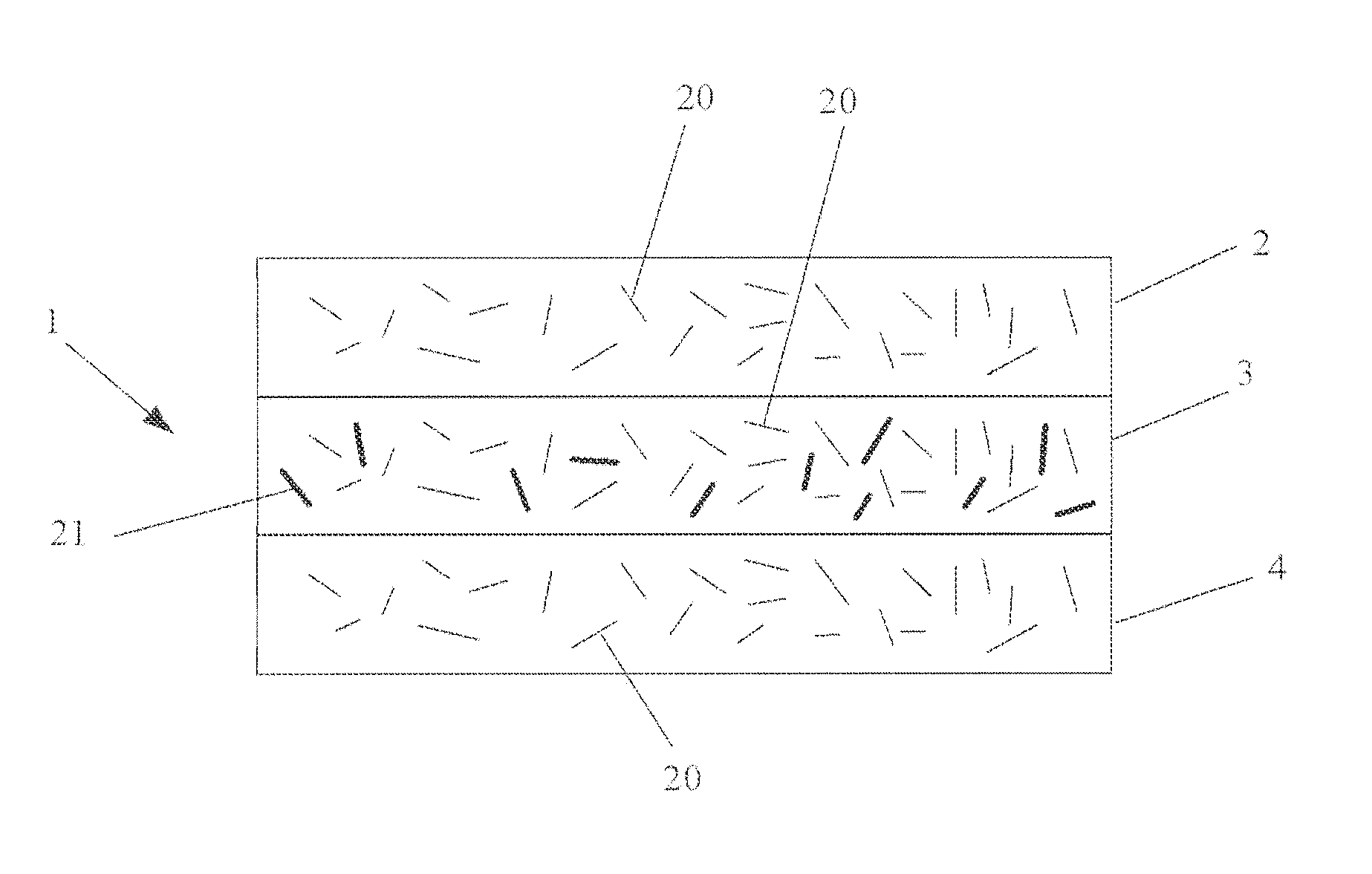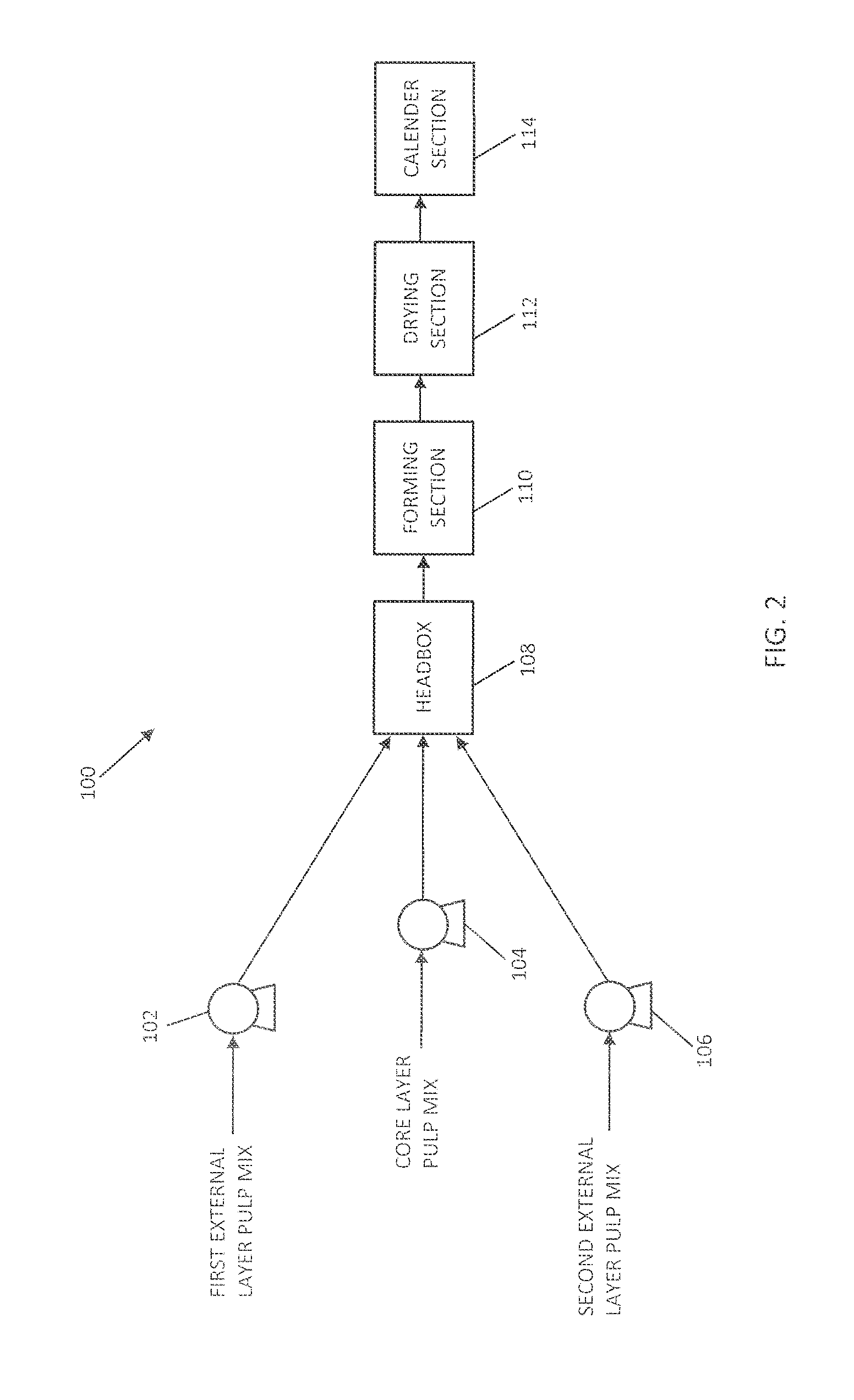Flushable wipe and method of forming the same
a technology of wipes and wipes, applied in the field of wipes, can solve the problems of not being able to flush, not being able to manufacture these types of products, and being critical to the flushability of wipes,
- Summary
- Abstract
- Description
- Claims
- Application Information
AI Technical Summary
Benefits of technology
Problems solved by technology
Method used
Image
Examples
example 1
[0139]Multiple hand sheets were produced using TAD / ATMOS technology. The samples were formed on a dynamic sheet former with basis weight ranging from 50 gsm to 70 gsm. The basesheet was produced with 70 to 100% softwood fibers and 0 to 30% tencel fibers. The tissue samples according to Example 1 were produced with addition of a temporary wet strength additive at a concentration of 0.01 to 0.5% range, Hercobond 1194 (Ashland, 500 Hercules Road, Wilmington Del., 19808) to the thick stock.
example 2
[0140]Multiple hand sheets were produced using TAD / ATMOS technology. The samples were formed on a dynamic sheet former with basis weight ranging from 50 gsm to 70 gsm. The sample basesheets were produced with 70 to 100% softwood fibers, 0 to 30% tencel fibers and 0 to 20% hemp fibers. The tissue samples according to Example 2 were produced with addition of a temporary wet strength additive at a concentration of 0.1 to 0.5% range, Hercobond 1194 (Ashland, 500 Hercules Road, Wilmington Del., 19808) to the thick stock.
example 3
[0141]Multiple hand sheets were produced using TAD / ATMOS technology. The samples were formed on a dynamic sheet former with basis weight ranging from 50 gsm to 70 gsm. The basesheet samples were produced with 70 to 100% softwood fibers and 0 to 30% tencel fibers. The tissue samples according to Example 3 were produced with addition of a temporary wet strength additive at a concentration of 0.1 to 0.5% range, Hercobond 1194 (Ashland, 500 Hercules Road, Wilmington Del., 19808) to the thick stock and carboxyl methyl cellulose (CMC) from Ashland Inc., at a concentration of 0 to 0.25% on the weight of fiber.
PUM
| Property | Measurement | Unit |
|---|---|---|
| Length | aaaaa | aaaaa |
| Length | aaaaa | aaaaa |
| Length | aaaaa | aaaaa |
Abstract
Description
Claims
Application Information
 Login to View More
Login to View More - R&D
- Intellectual Property
- Life Sciences
- Materials
- Tech Scout
- Unparalleled Data Quality
- Higher Quality Content
- 60% Fewer Hallucinations
Browse by: Latest US Patents, China's latest patents, Technical Efficacy Thesaurus, Application Domain, Technology Topic, Popular Technical Reports.
© 2025 PatSnap. All rights reserved.Legal|Privacy policy|Modern Slavery Act Transparency Statement|Sitemap|About US| Contact US: help@patsnap.com



